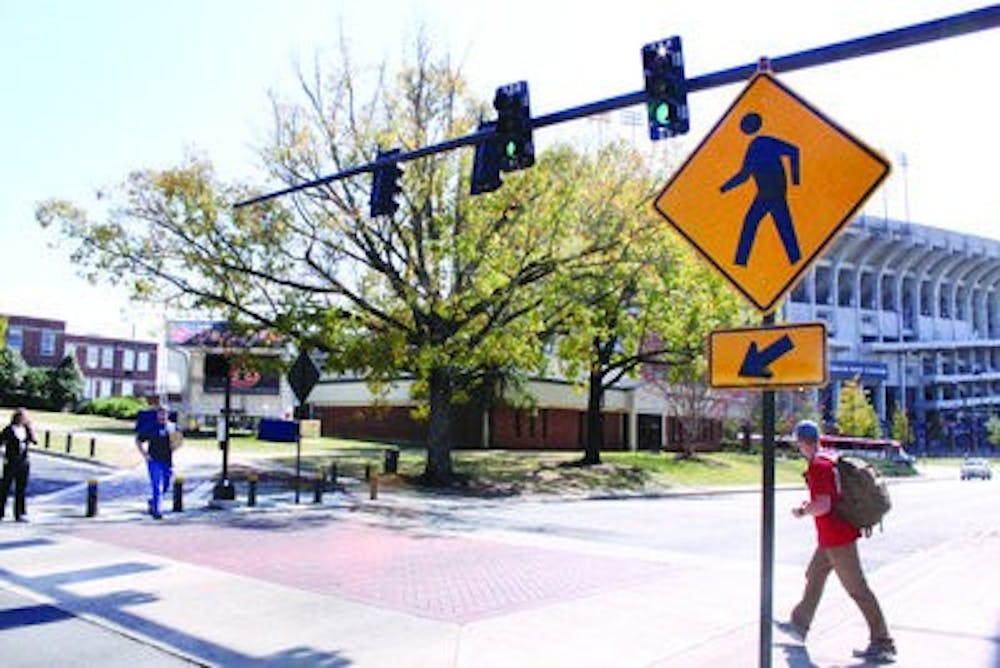Say goodbye to your favorite crossing guard.
Two new traffic lights with accompanying pedestrian signals have been installed on Donahue Drive by the Village.
"The crossing guards cost a lot of money, and they weren't there all the time, whereas if you put in an automatic signal it's always there," said Cathy Love, a civil engineer in the University facilities department. "I think it's much more reliable and consistent even if it's not as personable."
Student reactions to the new lights vary, with some preferring the human element of a posted guard.
"It's a little on the annoying side because you have to wait a little bit longer, but it's not that big of a deal," said Brianne Arps, freshman in education. "If anything, it would just hold me up a minute or two, but I think the crossing guard was a little more effective."
Ryne Watts, junior in industrial engineering, said he's glad there is a system in place to direct traffic at all times.
"It's probably cheaper than hiring people to direct traffic," Watts said. "And when there's no one to direct things at certain times of the day, people just keep coming and the cars never get a chance to go."
Love said the $200,000 project began three years ago to direct the additional traffic resulting from the Village's construction.
"I have seen students jaywalk," Love said. "That's a bad thing. When everybody is following the same set of rules and are considerate of each other, that's when you can get really good level of service. You get the most traffic through without any gridlock."
Hired guards will stay nearby for a month to educate pedestrians about the new system, Love said.
"It's not automated like it was before when the pedestrians could get a walk signal every so many seconds," Love said.
"Even in the middle of the night when there were no pedestrians, the timer would come on and stop traffic, and the cars would just sit and sit."
Though the new lights are more efficient, the increase to five stoplights on a single road has made some wary.
"The first thought was, 'Oh, wow, that's a lot,' but actually it's consistent with engineering," Love said. "They're all 300 feet apart. They're all coordinated and programmed for maximum level of service.
"If everyone's following the rules, you'll get big platoons of people and big platoons of cars passing each on their turn."
Do you like this story? The Plainsman doesn't accept money from tuition or student fees, and we don't charge a subscription fee. But you can donate to support The Plainsman.





